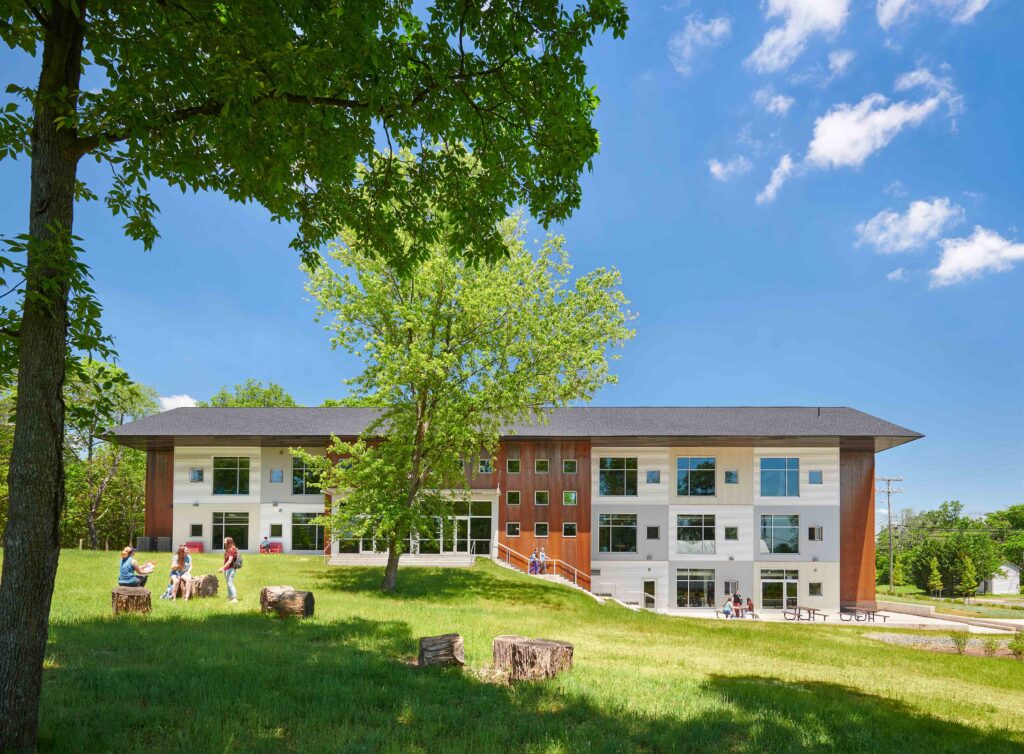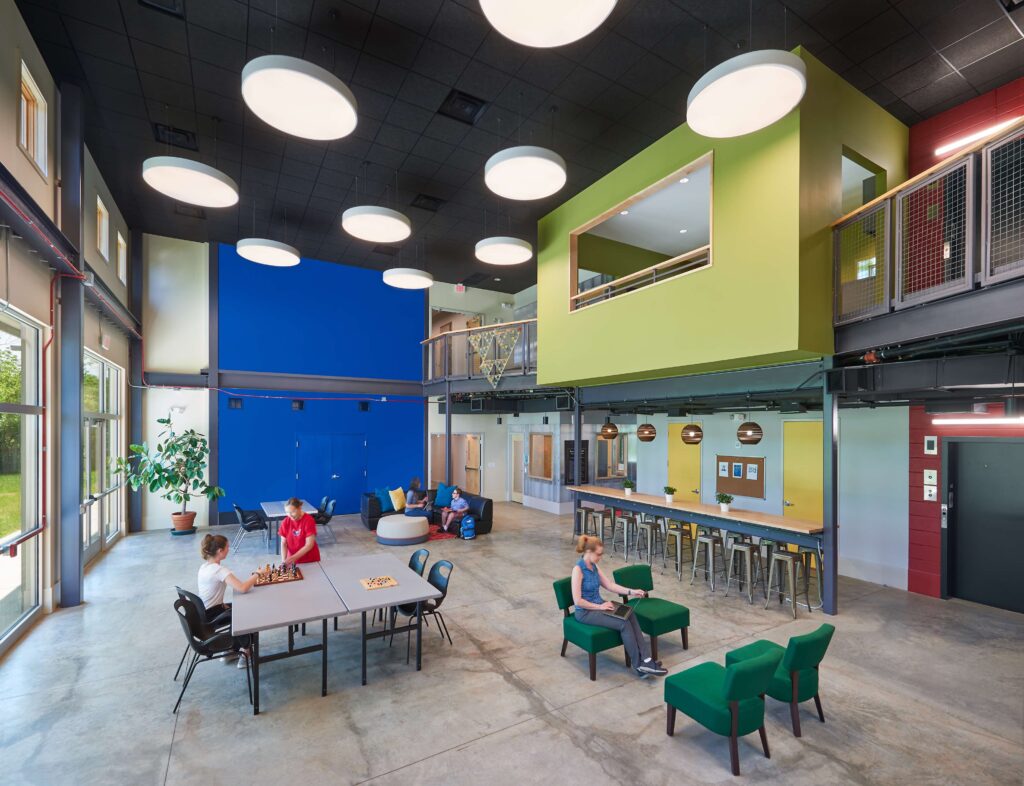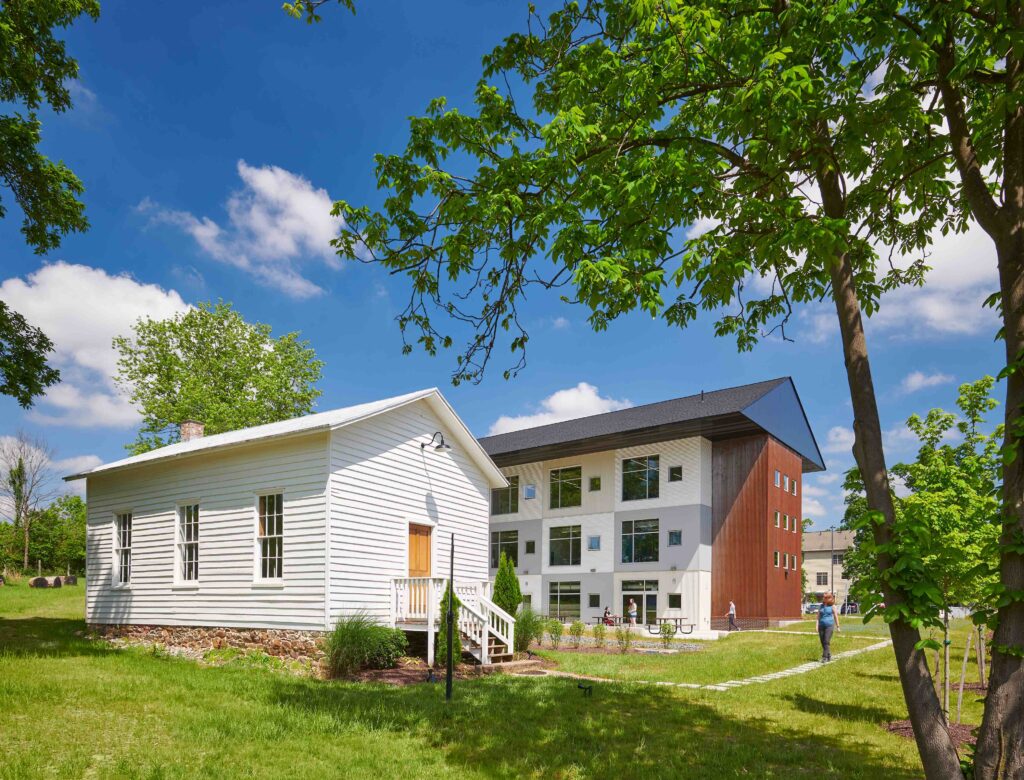Loudoun County has changed a lot in the last two decades. Horses and farms still define its idyll for city slickers, but an encroaching exurbia has raised the alarm for many residents (and their horses), some of which speak only of inevitabilities. Driving home recently from visiting the Loudoun School for Advanced Studies (LSAS) in Ashburn, designed by Reader & Swartz, I passed no fewer than 13 Teslas and one mauve Hummer, and I began considering what’s inevitable about the place. Thinking about the school, it seems possible that what’s new and old about Loudoun County might even prosper together under certain economic circumstances. But, what about the social infrastructure that makes it a real place?

“If you go back to Plato’s Republic, it comes down to education. You can try what you want with political or legal change, but the next generation needs to be educated for leadership. That’s the social purpose,” says Deep Sran, the school’s founder and, across two iterations of its physical plant, Reader & Swartz’s client. Sran’s partnership with the Winchester-based firm began about 15 years ago when the educator and attorney wanted to create a new model for education by channeling what he calls his “bored 15-year-old self.”
As a result, the “advanced studies” part of the school’s title is as much as a market differentiator as it is a pedagogical gambit to address what its curriculum describes as “real world challenges.” How will magnetism change the way we get around? What is the promise of RNA vaccines in a post-COVID world? What does identity, memory, and morality have to do with language? Could the Cold War have had a greater impact on political boundaries than 19th century imperialism and two world wars combined? Those are only a few of the questions raised in the 2021-2022 course catalog.
A different kind of curriculum called for a different kind of physical school, says Beth Reader, FAIA, who worked with Chuck Swartz, FAIA, to create Sran’s first LSAS as a flexible space near Dulles Airport a decade ago, before embarking on the current building, which they completed in 2019.
“What we’ve done is a different kind of school,” says Reader. “It’s smaller than most contemporary schools and it doesn’t fall into the normal categories of what schools look like. It’s also not trying to be over-designed, outside or inside.”

But, even if Swartz affectionately calls it, “just a big rectangle,” there’s no “just” anything inside, which offers an array of flexible learning environments from conference rooms to break-out spaces for one, two, or three students wishing to study in solitude or together. There are smaller, more conventional classrooms with room for 12. There are laboratory spaces that host Bunsen-and-beaker experiments and also open up onto a patio that runs the length of the south façade for more elaborate experiments (with maximum ventilation). Then, there’s what Reader and Swartz call “the piazza,” which is the largest and least programmed space in the building that students use as a respite, a lunching spot, and a social hub for their daily routine.
Buildings fail because they can’t adapt, says Swartz, invoking Stewart Brand, author of the Whole Earth Catalog and How Buildings Learn, which he says is a design ethic embedded in LSAS’ programmatic flexibility now, as well as its future institutional flexibility later. “You can even see the plumbing and wiring in the walls and see how the whole thing is assembled. It’s educational for the students, but it also makes future renovations easier,” he says.
Adaptability is also about the site’s history, too. Less than 50 feet away from the open-air science patio sits the newly restored Ashburn Colored School, a circa 1892 single-story building that’s about as big as a single-car garage. It closed in 1958. As part of the legacy of segregated education in Virginia, the school remains a teaching tool for its students and the local community. But, Reader & Swartz also adapted the LSAS building to echo its modest form, materiality, and proportions. The roof pitch between the two buildings is identical. The tin roof of the schoolhouse is echoed in the corrugated metal at certain points in the LSAS envelope. And, the two are sited parallel to the road telling you the same story from two different perspectives. It’s an obvious architectural connection in looking at the two structures side by side, and a curricular one that LSAS students observe, utilize, and embody, says Sran.

“This new school had the potential to honor a site, tell a story about a terrible set of events, celebrate progress, and then give people a reason for optimism.”
About the Project
Reader & Swartz: The Loudoun School for Advanced Studies, Ashburn
Completed 2019
Builder: Hammerhead Construction, Inc.
Structural Engineer: Painter-Lewis, P.L.C.
Photography: Judy Davis, Studio HDP
Project team: Beth Reader, FAIA; Chuck Swartz, FAIA, LEED AP; Laura Ours, AIA; Kevin Walker, AIA; Nathan Webb, AIA, LEED AP; Joel Richardson, Associate AIA, Pete Serafin, AIA
About the author
William Richards is a writer and editorial consultant based in Washington, D.C. From 2007 to 2011, he was the Editor-in-Chief of Inform Magazine.
